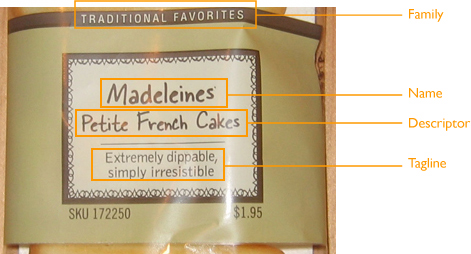Hallmark of the New Enterprise: Knowledge Markets
Using the automotive industry and an analogous variety of software mega-packages with three-letter acronyms as examples, we’ve been discussing the death of the traditional enterprise for a few weeks. We’ve observed that enterprise efforts relying on massive top-down approaches become inefficient and wasteful, if not counter-productive. They also either fail to support the health of the individuals or groups involved – customers, users, sellers, employers – or in fact directly reduce the relative health of these parties. With Conway’s Law as a guide, we discovered that the structure or form of an organization influences or determines the nature and quality of the things the organization creates.
This all concerns the past: so now it’s time to look ahead, at the new enterprise. Of course, scrying the future inevitably relies on a mixture of hand waving, vague pronouncements, and the occasional “it’s not possible yet to do what this implies” to point the way forward. What’s often lacking is a present-tense example to serve as clear harbinger of the future to come. I came across an example today, drawn from the debate surrounding the proposition that the U.S. Army is close to a breaking point. In an episode of On Point titled Are US Forces Stretched Too Thin?, several panelists (names not available from the program website yet) made three telling points about the Army that show it as an organization in transition from the old model enterprise into a new form, albeit one whose outlines remain fuzzy. I’ll paraphrase these points:
To support this practice, company commanders created a forum for sharing innovations amongst themselves, called CO Team: CompanyCommand. The description reads, “CompanyCommand.com is company commanders-present, future, and past. We are in an ongoing professional conversation about leading soldiers and building combat-ready units. The conversation is taking place on front porches, around HMMWV hoods, in CPs, mess halls, and FOBs around the world. By engaging in this ongoing conversation centered around leading soldiers, we are becoming more effective leaders, and we are growing units that are more effective. Amazing things happen when committed leaders in a profession connect, share what they are learning, and spur each other on to become better and better.”
It’s the third point that gives us a clue about the nature of the new enterprise. CompanyCommand.com is an example of a ‘knowledge marketplace’ created and maintained by an informal network within an organization. Knowledge marketplaces are one of the components of what McKinsey calls The 21st Century Organization. Knowledge marketplaces allow knowledge buyers “to gain access to content that is more insightful and relevant, as well as easier to find and assimilate, than alternative sources are.”
McKinsey believes that these markets – as well as companion forms for exchanging valuable human assets called talent markets – require careful investment to begin functioning.
“…working markets need objects of value for trading, to say nothing of prices, exchange mechanisms, and competition among suppliers. In addition, standards, protocols, regulations, and market facilitators often help markets to work better. These conditions don’t exist naturally – a knowledge marketplace is an artificial, managed one – so companies must put them in place.”
On this, I disagree. CompanyCommand is an example of a proto-form knowledge marketplace that appears to be self-organized and regulated.
Moving on, another component of the new enterprise identifed by McKinsey is the formal network. A formal network “…enables people who share common interests to collaborate with relatively little ambiguity about decision-making authority – ambiguity that generates internal organizational complications and tension in matrixed structures.”
In McKinsey’s analysis, formal networks contrast with informal social networks in several ways. Formal networks require designated owners responsible for building common capabilities and determining investment levels, incentives for membership, defined boundaries or territories, established standards and protocols, and shared infrastructure or technology platforms.
My guess is that CompanyCommand again meets all these formal network criteria to a partial extent, which is why it is a good harbinger of the forms common to the new enterprise, and a sign of an organization in transition.
Can you think of other examples of new enterprise forms, or organizations in transition?
In the next post in this series, we’ll move on from the structure of the new enterprise to talk about the new enterprise experience, trying to track a number of trends to understand their implications for the user experience of the new enterprise environment.
Related posts:




